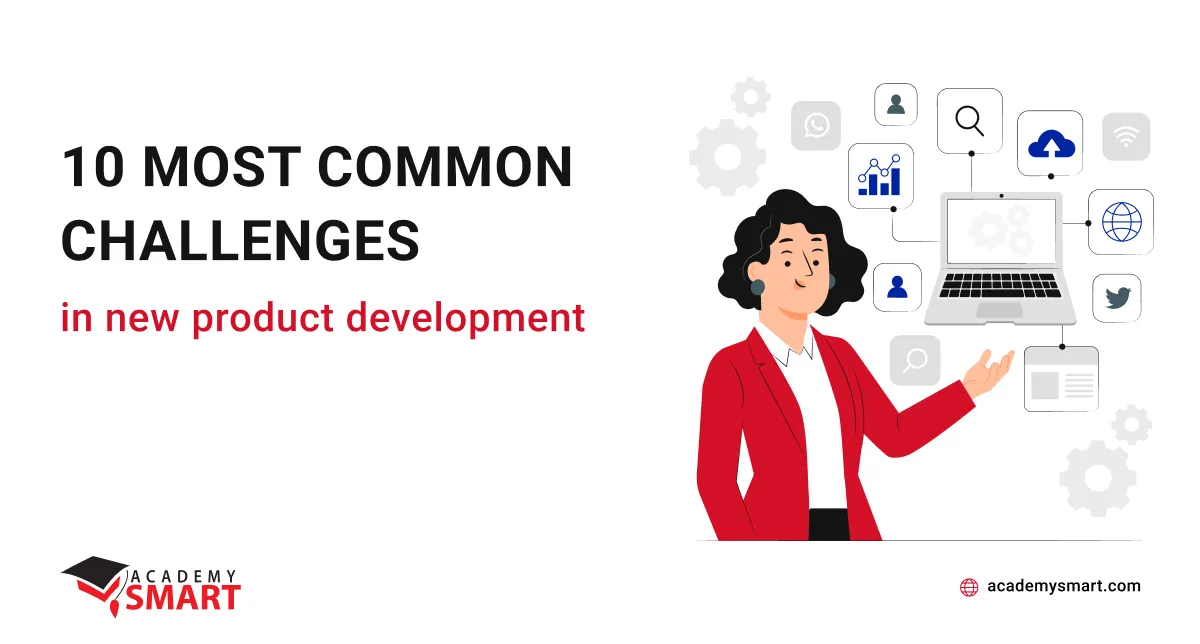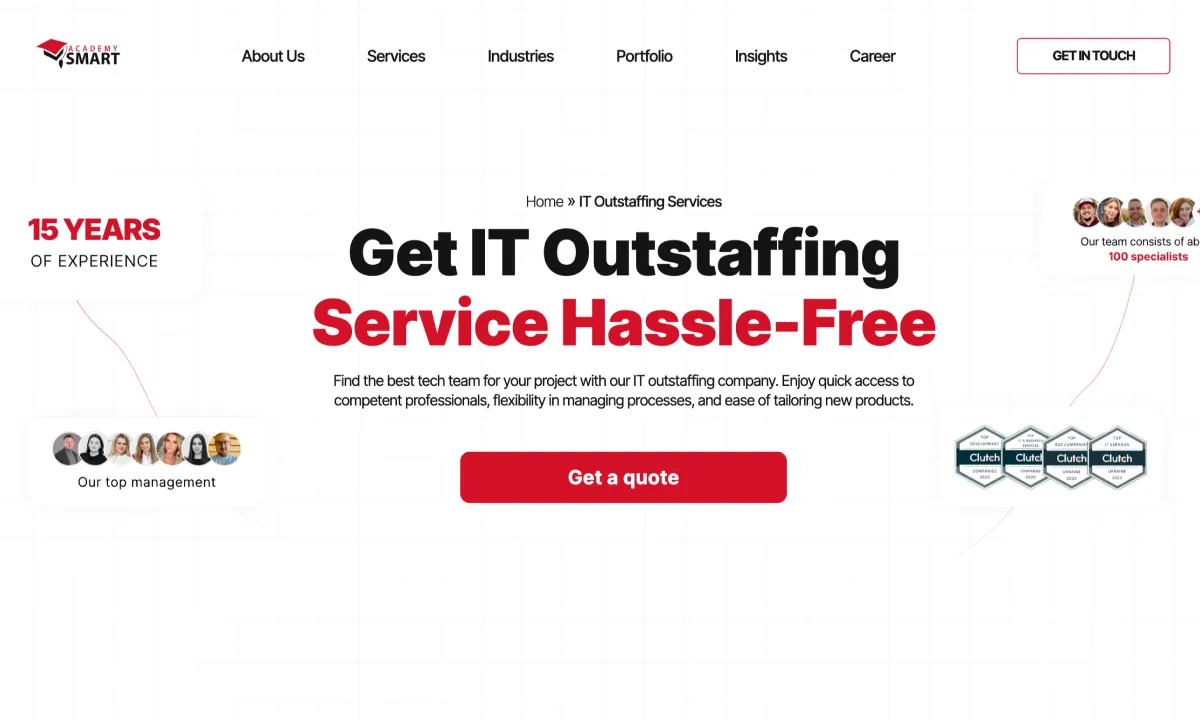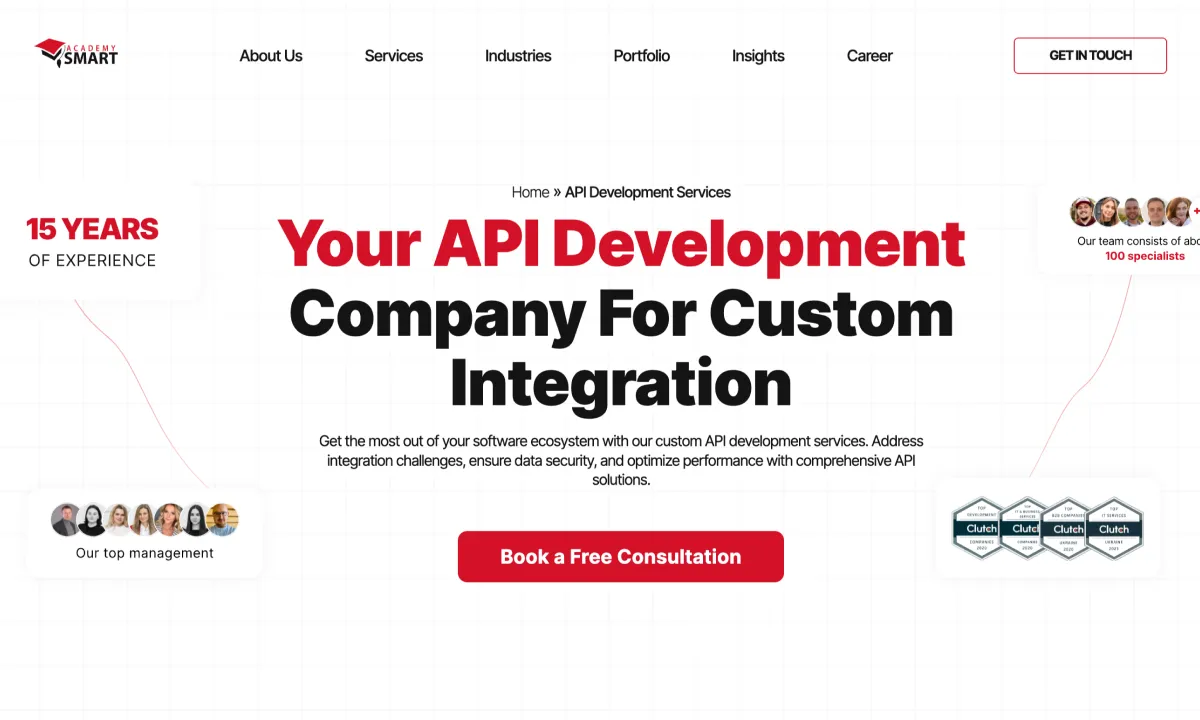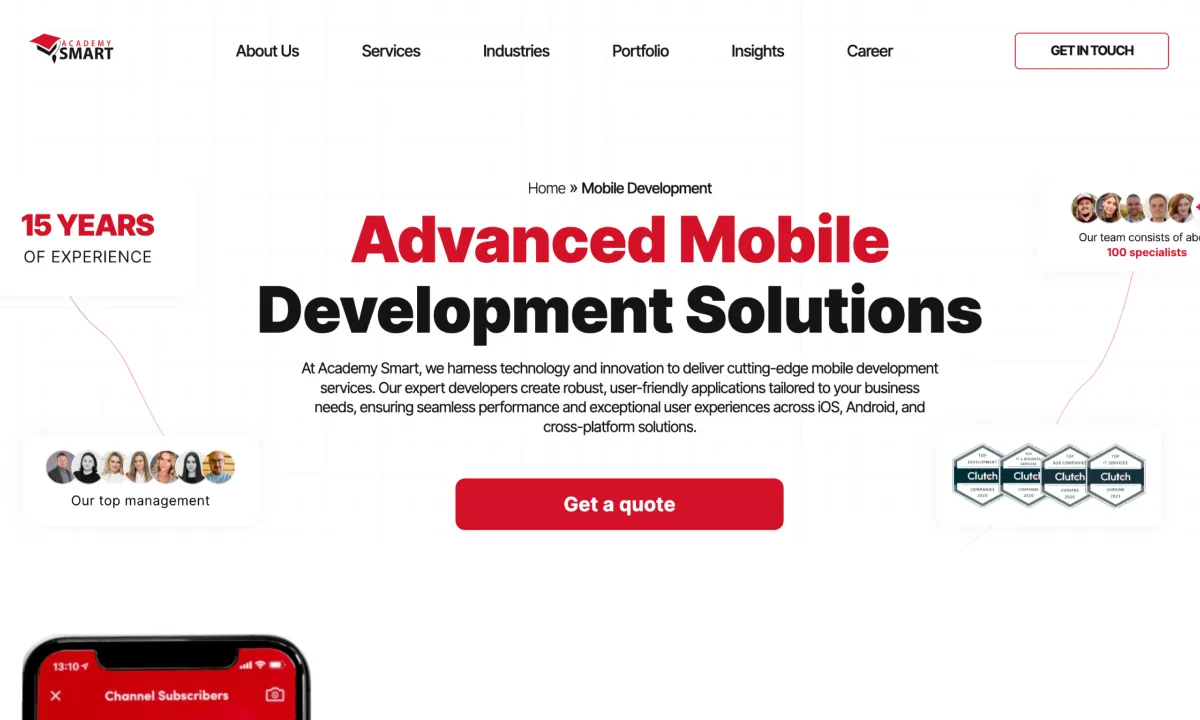
10 most common challenges in new product development
Contents
Are you planning to develop a software product to increase the availability of your services to customers, or to create an innovative application as a startup? Then you must know that awareness of the challenges involved in new digital product development is crucial. Building a successful software app requires careful consideration of its technical complexity, performance, security, and compliance with legal and regulatory requirements.
However, with responsible decision-making and a commitment to quality and customer satisfaction, you can increase your chances of creating a successful software product that meets clients needs and drives business growth. Investing in talent, technology, and processes is critical to overcoming these challenges.
In this article, we want to talk about the most critical problems you must solve to create good software. This information will be helpful to you in understanding the essence of the process of creating digital products and achieving your business goals more consciously.
10 challenges in new product development
Let’s look at the list of challenges that accompany the process of a new software product development in practice. Here you may find both technical and non-technical factors.
Among the technical ones, we should note the following:
- technical complexity – the specificity of the software architecture, design patterns, scalability, and maintainability.
- performance – ensuring the application operates efficiently and effectively under all conditions and handling large amounts of data without slowing down.
- integration – ensuring the product can integrate with other systems or devices, such as databases, APIs, and third-party software.
- security – ensuring the software is protected from unauthorized access, data breaches, and cyber-attacks.
- quality assurance – ensuring the app meets quality standards and user expectations through testing, debugging, and feedback.
No less complex are the following analytical and organizational challenges:
- market demands – keeping up with the constantly changing market trends, needs, and user preferences.
- user experience – ensuring the application is user-friendly, accessible, and meets the target audience’s needs.
- resource constraints – managing limited resources, such as time, budget, and team members, and balancing priorities.
- stakeholder communication – managing effective communication and collaboration with clients, team members, and external partners.
- legal and regulatory compliance – ensuring the software complies with relevant laws, regulations, and industry standards.
To create a successful digital product, you must combine the audience’s needs, the right expertise, the quality of execution, and sensitive business intuition. Let’s meet how our clients did it well in the Academy Smart’s portfolio. And then, get your knowledge in every detail about the obstacles you should overcome, creating your first-class software product.
Projects we delivered
1. Compliance and demand for the market
The main aim of software product development for businesses is to generate earnings, but not all ideas are viable for the market. The client and his project manager must deeply research the target audience’s needs, the current market propositions, the advantages and disadvantages of the product within the niche, and the competitors’ experiences.
It is essential to thoroughly analyze the product’s vision and alignment with market expectations to plan software development and create a roadmap for a project. As we discussed in our blog “Product Development Roadmap: how to create in 6 steps“, this stage is crucial in transforming an idea into a concrete action plan.
When developing a new digital product, pricing can be challenging — finding the right balance between charging too much and risking low sales or charging too little and risking huge losses. It’s a product manager’s responsibility to determine the maximum amount potential customers are willing to pay for the app.
To determine the best pricing strategy, companies must consider several important factors, such as the costs associated with hiring developers, marketing costs, and costs for product implementation. Market volatility also needs to be considered when setting the initial price. One way to estimate costs is by analyzing the pricing policies of competitors.
In an agile development environment, it’s essential to master the skills and understanding of Lean Product Development to help make informed pricing decisions. By incorporating customer feedback and continuously testing and iterating the product, you can refine the pricing strategy and ensure that the product meets the market’s needs while remaining profitable.
It is also essential to note that software development occurs in a state of global competition. It’s unknown at what stage of building a similar solution the competitors are, even if your product idea seems unique. There is always the risk of being late in time to market. Additionally, applications become outdated as technology advances, and their updating may course other challenging decisions.
Practice shows if the product turns out to be unprofitable for the business, the best decision is to decline its development and look for alternative solutions.
2. User experience
User experience is crucial when creating a new software application because it involves designing a product that is easy to use, efficient, and enjoyable for the user. Here are some reasons why UX can be challenging:
- Understanding the user
It’s essential to understand the user’s needs, goals, and behaviors to create a great user experience. It involves conducting user research, which can be time-consuming and requires expertise. Getting feedback from potential users early in the development process is necessary to save time and resources on features that don’t meet user expectations. - Balancing functionality and usability
A new software often has many features developers want to include. However, too many features can make the product too complex and confusing. It’s important to balance functionality and usability to ensure the user can easily understand and navigate the product. - Iterative design process
Creating a good UX requires an iterative design process, where designers and developers make and test multiple product versions. It requires time, resources, and a willingness to accept feedback and implement changes. - Consistency
Consistency in design is essential for creating a great user experience. However, it can be challenging to maintain consistency across different platforms, devices, and user scenarios. - Technical constraints
Finally, technical constraints can make creating a good UX challenging. For example, an application may need to integrate with existing systems or use specific technologies limiting design choices. Finding ways to work within these constraints is essential while providing a great user experience.
One of the most common mistakes in new product development is underestimating the importance of creating a Minimum Viable Product (MVP).
It is crucial to use market research to identify the main characteristics and benefits of the product to create an effective MVP. It will ensure that the MVP showcases the most important aspects of the development and resonates with the target audience.
Many companies rush into building a simple prototype with just one feature, thinking it will be enough to demonstrate their idea. However, this approach can lead to misunderstandings and wasted resources. Including as many features as possible in the MVP is better to give investors or consumers a clear view of the future product. It will help show the product’s full potential and provide valuable feedback for further development.
3. Software technical complexity
The technical complexity challenge can arise from various factors, such as the scale and scope of the project, the number of features and functionalities, and the need to integrate with existing systems or technologies. So, expertise and finding the right development team to manage it can be a significant challenge too.
Developing a new application can require specialized technical expertise in various areas, such as programming languages, frameworks, databases, networking, and security. Depending on the project’s specific requirements, finding programmers with the right skill sets and experience may be challenging. For example, if the project involves working with emerging technologies or niche programming languages, hiring devs with relevant experience may take a lot of work.
Communication skills, team dynamics, and project management experience can all affect the product’s success. Finding and assembling a team that meets all these needs can be time-consuming and resource-intensive. Even if developers with the required technical expertise are available, building a team that can work together effectively and efficiently to deliver the project may be challenging.
Once the team is in place, managing the processes can be daunting. The project may involve multiple technologies, systems, and stakeholders, and ensuring that all these components work together seamlessly can be a significant challenge. It requires a robust project management framework that includes risk management, quality assurance, and testing processes.
Finally, this problem can appear over time if the requirements change. As stakeholders provide feedback or new use cases emerge, the project may need to be revised or re-scoped, which can further increase the software’s complexity. Managing these changes while ensuring the project stays within scope and budget requires a flexible and adaptable development team.
Tech stack selection is another significant challenge in new product development, which can contribute to the application complexity. Here are some additional points to consider:
- Compatibility
When selecting a technology stack for a new product, ensuring that all the components work together seamlessly is essential. That requires evaluating the compatibility of different technologies, frameworks, and libraries. For example, selecting a tech stack compatible with specific systems and regulations may be necessary if the project involves integrating existing systems or technical industry standards. - Scalability
Another consideration in tech stack selection is scalability. The tech stack should support the product’s growth and handle increased traffic and usage over time. It requires selecting technologies that can scale horizontally and vertically and are designed for high availability and performance. - Development and maintenance costs
Finally, the cost of development and maintenance is crucial in tech stack selection. Some technologies may require more development time and resources, increasing the product’s price. Additionally, the maintenance cost should be considered, as some technologies may require ongoing updates and patches to ensure optimal performance and security.
In summary, selecting the right tech stack for a new product is critical to managing the software development challenge. It requires evaluating the compatibility, scalability, security, and cost of different technologies and frameworks and selecting those that meet the product’s requirements. We’ve told you how to choose it intelligently in our blog How To Choose Technology Stack: Clients Guide.
4. Application performance
Application performance is a critical challenge in software development. It requires designing the apps architecture with scalability, optimizing resource utilization, testing and optimization, and real-time monitoring. By addressing these challenges, developers can ensure that the digital product performs optimally and meets user expectations.
Here are some points it’s good to consider:
- User expectations
In today’s digital world, users expect software applications to be fast, responsive, and reliable. Therefore, ensuring optimal application performance is crucial to the success of a new product. If an app is slow or unresponsive, users may become frustrated and abandon it, resulting in a loss of revenue and reputation damage. - Scalability
As the user base grows, the application must be able to scale to handle increased traffic and usage. It is essential to design the app architecture with scalability in mind and use technologies that can handle increased load and traffic. - Resource utilization
How the software uses system resources such as memory, CPU, and disk I/O can affect application performance. Inefficient resource utilization can result in slow response, crashes, and downtime. Therefore, optimizing the application’s resource utilization is crucial to ensure optimal performance. - Testing and optimization
Testing and optimization are essential to ensure the application performs optimally under different scenarios and usage patterns. Load and stress testing can help identify performance bottlenecks and areas needing to optimize. Regular state revision of the app can also contribute to the software continuing to perform optimally over time. - Real-time monitoring
Real-time monitoring of application performance can help identify and address performance issues before they affect users. It is essential to have a robust monitoring system in place that can detect problems in real time and provide alerts to the development team.
5. Software integration abilities
Integrating a new digital product with existing systems or third-party software can be a complex process too, as it requires ensuring that all the components work together seamlessly. The complexity can increase depending on the number of systems and software products that need to be integrated and the variety of data formats and protocols they use.
Ensuring interoperability between different systems and applications is essential to successful integration. New app must be able to communicate with other systems and software products, regardless of the data formats and protocols they use.
Integration requires ongoing maintenance to ensure the software works seamlessly with other infrastructure. It can include updates to APIs, protocols, and software versions, as well as bug fixes and patches. That all requires specific technical knowledge, so the development team must have the skills and expertise to integrate new products with other applications and troubleshoot any issues that arise during this process.
6. Security
Security is another critical challenge. Here are some points to pay attention to:
- Cybersecurity threats constantly evolve, and developers must stay up-to-date with the latest threats and best practices for securing software applications. The development team must design the product with security in mind, including secure coding practices, data encryption, and access controls.
- Many apps use third-party components such as libraries, APIs, and frameworks. These components can introduce security vulnerabilities if not updated and maintained correctly. The development team must ensure that all third-party elements are updated to the latest versions and securely integrated into the software application.
- Human error can also introduce security vulnerabilities into software applications. For example, weak passwords or lack of proper access controls can compromise the application’s security. The development team must educate users on acceptable security practices and ensure that the software application has robust security features and protocols to mitigate the risk of human error.
- Security is not a one-time effort; it requires constant maintenance and updates to stay ahead of emerging threats. The development team must have a process for ongoing security updates and monitoring to ensure the application remains secure over time.
7. Quality assurance
Quality assurance ensures that the application meets user requirements and expectations. The development team must thoroughly understand user needs and preferences, as well as industry standards and best practices, to provide the highest quality of software.
Testing is a critical component of quality assurance, and the development team must have a rigorous testing process to catch any bugs or issues before the software product is released. Testing can include unit testing, integration testing, system testing, and acceptance testing, among others.
Meeting user expectations and ensuring high-quality software can sometimes claim certain technical compromises. For example, incorporating certain features or functionality may require additional resources or more complex technical solutions.
Or suppose the development team is pressured to release the software product before it is ready or to cut costs by reducing the budget. In that case, quality assurance may suffer, resulting in bugs, glitches, and security vulnerabilities.
So, the development team has to balance the product vision with technical constraints and limitations. In addition, this challenge requires ongoing maintenance and updates to be sure that the product remains of high quality over time. The developers must have a process of continuing quality assurance, including monitoring user feedback and addressing any issues or bugs.
8. Resource constraints
What are the resource constraint challenges in new software product development?
- Time constraints
App creation often has strict deadlines, which can create pressure to deliver the project quickly. However, rushing the development process can result in lower-quality software or incomplete features. The developers must find ways to balance the need for speed with the need for high-quality products. - Budget constraints
Limited budgets can restrict the resources available for software development, including personnel, technology infrastructure, and tools. The project management must find ways to optimize their resources and prioritize tasks to ensure that the most critical features and functionality are included. - Personnel constraints
Limited personnel can make it challenging to complete a project on time and within budget. The development team must assess the skills and experience of their personnel and allocate tasks accordingly. Additionally, they may need to outsource specific tasks or bring in additional outstaffing devs to complete the project. - Technology infrastructure constraints
Outdated or inadequate technology infrastructure can slow down the development process and limit the software product’s capabilities. The developers must assess its technology infrastructure and determine whether additional resources or upgrades are necessary to support the app’s activity.
In summary, the above points can be a significant challenge in software development, requiring the development team to flexibly harmonize competing priorities and optimize their resources.
9. Stakeholder communication
Good established communication is an essential part of software creation, as it involves managing the expectations and requirements of various stakeholders throughout the development process. They include investors, customers, management, development and marketing teams, etc. Their collaboration is crucial for successful product devilering. Still, stakeholders may have different visions of the aims and tasks, creating conflicts and delays in the development process. Besides, finding a strong project manager with solid organizing skills may be challenging.
Any way, the development team must facilitate effective collaboration by reliable communication channels, setting expectations for participation, and providing clear guidelines for feedback and contributions. In addition, developers should be open to any input from other stakeholders and incorporate it into the app building process as appropriate.
10. Legal and regulatory compliance
In creating new apps, the developers must be sure that the product complies with relevant laws and regulations, such as data privacy, security, and intellectual property laws. Failure to comply with these laws can result in legal and financial consequences for the organization. There were many cases when applications that didn’t comply with the regulations and rules for using services were removed from the Google, Apple, or Microsoft app stores. And their owners sometimes were involved in legal proceedings. Therefore, paying particular attention to the study of industry standards and regulations and national legislation actually means protecting yourself from unnecessary development costs in the future.

The top 10 challenges of new software application development by Academy Smart
How Academy SMART can help you
Developing a new software product is a challenging process that requires expertise and proper organization. As a professional development team with a track record of delivering over 100 different software products, we understand the importance of having qualified experts and implementers to assist with the project.
Our team has extensive experience building custom enterprise software from scratch, using the latest and most reliable tools to create applications of any complexity. By working with us, you can avoid the recruitment and organizational challenges of developing a new software product and trust the work of professionals.
If you need programmers with specific specializations, we also offer a staff augmentation service with outstaffing employees to meet your needs. Additionally, our services are cost-effective as we are a company based in Ukraine known for providing high-quality offshore developers.
Let’s discuss your ideas and find the best way to implement them today.
Challenges in new product development: Frequently Asked Questions
What are the biggest dangers in new product development?
The biggest dangers in new product development include market, technology, financial, competitive, regulatory, and reputational risks. Organizations can mitigate them by conducting thorough research, testing, and quality assurance and developing strategies to differentiate their product and comply with relevant regulations.
Why does product development fail?
Product development can fail for various reasons, such as inadequate market research, poor product design or execution, lack of resources or funding, failure to meet customer needs or expectations, and stiff competition.
Book a free consultation

Reach out to start talking today!













